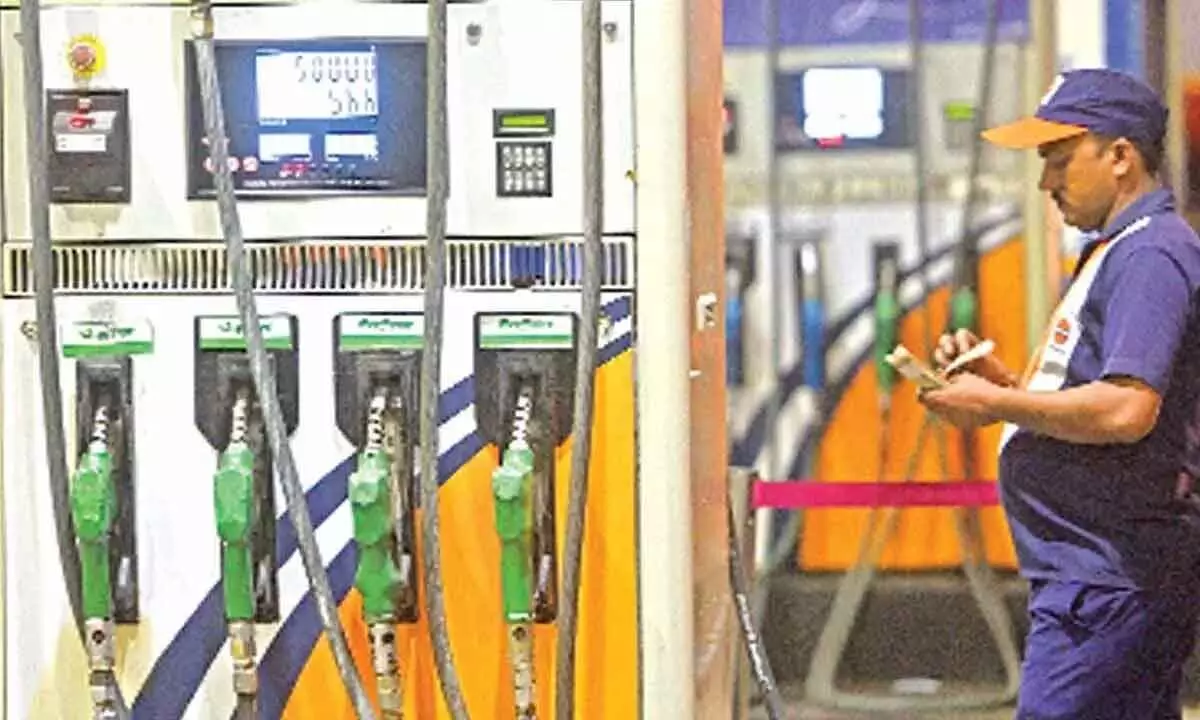India needs to lower taxes on fuel to pull down inflation

Aggressive rate hikes by the US Fed and volatility in global crude oil prices due to Ukraine conflict could slow India’s economic growth: CEA Nageswaran
The Chief Economic Advisor (CEA) Anantha Nageswaran's concern over headwinds facing the country's economy highlights the fact that the external environment is constraining growth at a time when recovery needs to pick up pace rapidly. The two factors that could potentially slow growth, according to him, are aggressive rate hikes by the US Federal Reserve and volatility in global crude oil prices due to the Ukraine conflict. The first development has not come as a surprise either to markets or investors in this country. The second, on the other hand, was unexpected not just here, but throughout the world. It has created havoc in the global economy and India is just one of many emerging economies that is facing the repercussions of a conflict taking place far away in Europe.
Though Nageswaran seemed to be concerned at the extent of hawkishness of the Fed in their projections, he felt it may be difficult for them to hike the rate too steeply. As of now the Federal Reserve has raised the federal funds rate by 25 basis points in March, the first hike since the pandemic began in 2020. It has even stated it would raise rates six times in consecutive review meetings this year.
The rate hike, however, has been expected for the past six months. As a result, markets here have already factored in this issue. The flight of capital by foreign institutional investors that was expected to create ripples has already occurred and stock markets have already come back to normal. Even so the Reserve Bank of India has announced it will gradually withdraw its accommodative policies and put the focus back on inflation rather than growth. Latest data showed the change in focus was justified given that headline inflation had crossed 6 per cent in February, higher than the upper level of the tolerance band fixed by central bank.
The other headwind cited by the Chief Economic Advisor is more troubling and could cause long term pain to the economy. As it is, retail prices of petrol and diesel are hovering around Rs 100 per litre in many major cities. In case global markets continue to remain at over 100 dollars per barrel over the next two quarters, he indicated the burden would have to be shared three ways, between the general public, the government and oil companies. In other words, some amount of subsidy would have to be borne by the exchequer while the oil companies would once again end up having under-recoveries on sales of petroleum products. As for consumers, they are already over-burdened with the recent rapid price increases of all petroleum products including petrol, diesel and LPG. Inflationary pressures are mounting as a result of the cascading impact on the entire gamut of goods and services. The latest inflation data for February largely reflects the impact of higher fuel prices. The potential impact of these developments is already being projected into growth estimates for the current fiscal, indicating there is a growing perception that the ramifications are not going to be merely in the short run. The Ukraine conflict was expected to end rapidly with Russia overrunning the smaller country. But this has not happened and it looks as if the war will now continue for many more weeks, if not months. With western countries imposing severe sanctions on Russia, goods normally imported from there and the Ukraine are now in short supply globally. This includes fertilizers, of which Russia has been a major exporter even to North America.
As for crude oil, it looks as if the international market will continue to be volatile for quite some time to come. The budgetary estimates for 2022-23 had been based on the premise that the Indian basket of crudes would range around 70 to 75 dollars per barrel. In contrast, this is now 99.86 dollars per barrel. Estimates would clearly have to be revised in case prices continue to hover at this level over the next six months.
What is worse is that there is little clarity on the movement of world oil markets in the coming months. Prices have been gyrating violently based on changing day to day scenarios. One major factor that has kept prices hardening is the effect of western sanctions on Russia which has led to the lowest oil and gas output since mid-2020. The other reason for the continued upward trend is the insistence by the OPEC that it cannot replace Russian oil supplies to the European Union simply by pumping more oil. At the same time, the biggest oil importer in the world, China is showing signs of weakening demand. Crude imports by this country fell by 14 per cent in March while another big importer, Japan has also been witnessing a slowing of demand recently. This has been ensuring that the upside for prices has a cap. Markets are thus volatile and it becomes difficult to make projections for the future with any certainty. In such a scenario, policy initiatives in regard to oil pricing are constrained by the fast moving developments in other countries. At the same time, there is need to ensure that fuel prices do not push inflation even higher than has been recorded lately. The best course of action would be to cut taxes on oil products as these are already at inordinately high levels. It will achieve the twin goals of reducing inflation and bringing down the burden of higher fuel prices on the general public.
But this is a course of action that has been repeatedly advocated over the past few months. It is now for the government to bite the bullet and cut taxes on petroleum products without any further delay.














